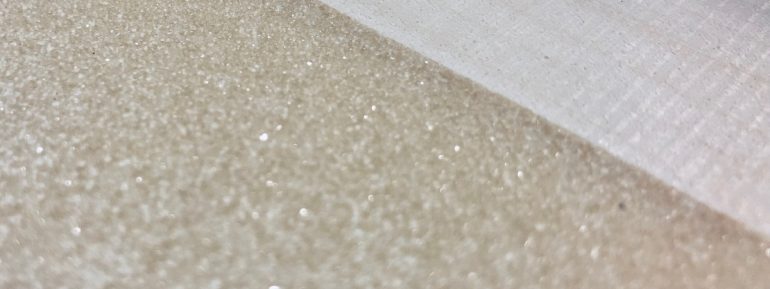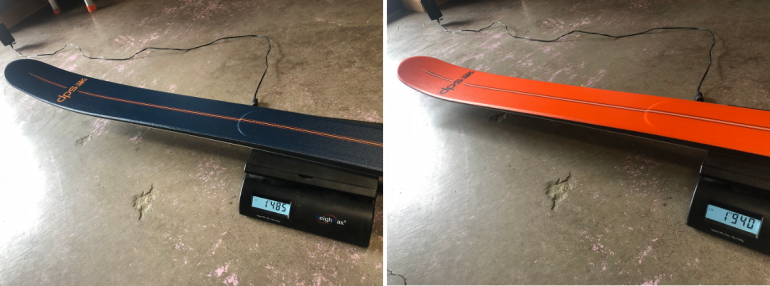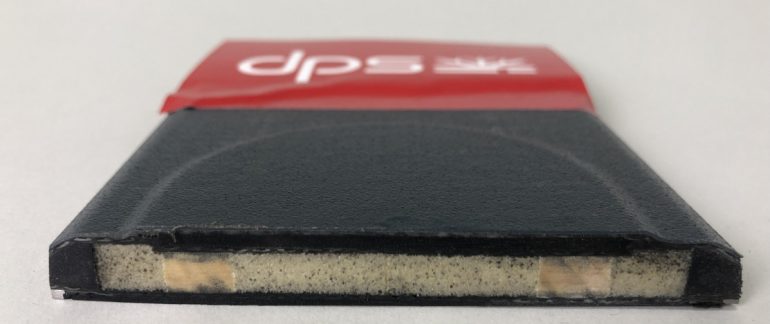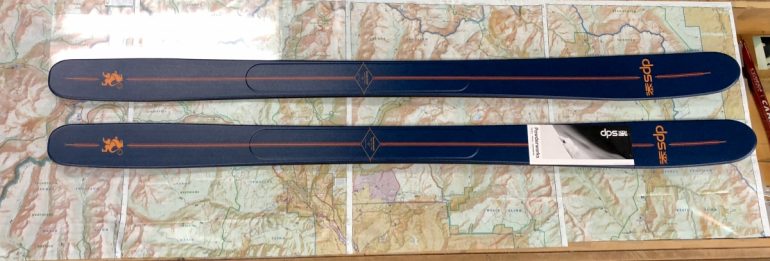I may not be a scientist or an engineer but I know my way around a ski’s construction, especially when I am standing in the bar. For example, while I was sneaking through the bar of Cripple Creek Backcountry in Vail, about to make my dash to the uphill track, a customer cornered me with a question: “Hey Doug, what would your ideal DPS ski be?”
I had been giving this some thought, so I described it as the following: DPS’s new Wailer 100 shape, as feathery as their superlight tour models, full sidewall construction and able to ski hard snow as well as their premier Alchemist skis. If you’re building dream skis, after all, why not shoot big?
Back in a nearby bar a week later, you can imagine my surprise when Thomas Laakso, VP of Product at DPS, reported to me that they had already built this exact ski.
Wailer 100 Tech Specs
Price: $1499!
Weight: 1485 grams
Length: 179 cm
Rocker Type: Camber underfoot, rocker tip and tail
Dimensions: 132 tip, 100 waist 117 in the tail
Turning Radius: 15 meters
Terrain predictions: Here at Wildsnow, we went away from it, but maybe the Obi One-ski-nobi quiver slot is coming back. Perfect for the skier wanting to one tool for the job from powder to hard pack.
The rise of carbon fibre in touring skis
When I entered the exciting world of ski touring gear over a decade ago, carbon fibre was a borderline disaster. It was overly stiff, expensive and fragile, and when it did fail it was catastrophic. Fast forward to 2019 and you will struggle to find a touring ski out there without an abundance of carbon in its construction. In fact, it is becoming so synonymous with high performance that most downhill skis use it at an increased cost, despite the fact that weight savings are not nearly as important.
So how did carbon fibre stage its hostile takeover as an essential element of ski construction and who were its accomplices? All along, the goal has been to create a ski with the positive qualities ski tourers want: light weight, responsive and able to maintain its camber longer than a non-carbon ski, while at the same time avoiding the reputation of a carbon ski being fragile, stiff and “pinny.”
DPS was certainly a main player in popularizing carbon, along with progressive shaped skis. They have had dozens of iterations all in a wild battle to exploit carbon’s strengths and mitigate its detriments. In the end, they came out victorious with many other fine ski manufacturers innovating on overdrive and quickly closing the gap.
While constantly tweaking their carbon, DPS has stepped up their commitment to performance again and moved their core manufacture in-house. This allows them to be more consistent and rule out many variables, such as differences in wood species, glues and epoxies used in construction. In addition to the wood used in their cores, they are taking an entirely new look at foam in the microstructure. When DPS says it is time to rebrand foam, it might be worth taking another look.
Foam gets a face lift. Enter the Wailer 100 Tour
I caught up with Laakso six months after trading ski stories at the bar in Vail to talk to him about the “F word” and ski construction. “Foam has often been associated with rental equipment in the ski world.” Laakso said. Images of spray foam come to mind and in some older lightweight skis you could even see the point of injection. “However, think about what exists under the shell of your car or glance out at the airplane wing keeping you in the air and you can bet foam is involved.”

More than just sparkling in the close up of this foam. At 10x the cost of their typical aspen core material, the foam is lighter weight but adds to the dampening and structural integrality.
So what is the difference between ski foam and aerospace foam? Well this is a secret guarded by DPS, which considers itself a technology company even more than a ski brand. Proprietary materials and construction techniques are closely hidden over there in Salt Lake. But what Laakso did explain to me is that foam has long been used in skis as placeholder for wood because it is lighter weight. Thus it existed for the absence of materials rather than as a material itself. However, even though there is more air in foam than wood, it is not the equivalent of air. By paying more attention to the structure between the air molecules, a ski with way better performance and longevity can be built.
When I was first told about the new concept for DPS’s special edition tour skis back in February, the goal was to make their lightest ski yet. After months of prototypes they decided it was best to put weight back into the core and focus on performance. Their hope is to have a ski that charges as hard as their premier Alchemist construction, but with a far reduced weight. In the end, they’ll leave full rando superlight skis to other brands and focus on what put them on the map.

The new Wailer 100 Tour, left, weighing in at an impressive 455 grams less than the Wailer 100 Alchemist to the right.
Enter the Powderworks Wailer 100 RP Tour. Within the ranks of DPS, the ski is reputed to feel no different than an Alchemist ski but at 25% less weight. The issue is that nobody outside of DPS has skied them yet. Their Powderworks series, released every July, is your chance to be a product tester at the price of a mere $1500. This makes it the most expensive ski we have seen to date. This ski may indeed be that perfect quiver of one and at that price, at least you won’t need two pairs.
Early releases and early consumer testing
Frankly, I believe this a clever way to handle product testing. Too many brands test only on professional skiers and by the time they are released to the general public, it is too late to take them back if things start to go wrong. Skis, at least, have a higher success rate than most goods in the ski touring business. However, we have seen many recalls on bindings and boots over the past few years as the arms race for the newest and lightest gear wages on.
Should you take a leap of faith on the future of ski tech, or is $1500 finally too high a price to pay? Should you wait for the general public to test out the Powderworks skis before you do? The problem is, with such a limited run on the iPhone 11 of skis, they will all be gone before the first snow hits the ground. It would be a leap of faith indeed. I for one, will be that mediocre skier in my apres dive bar sneaking glances out the window at my nice skis parked in perhaps the wrong part of town.
Speculation on the future of DPS skis
If you have been following DPS’s limited product releases for the past seven years, you will see that these are a glimpse at what is to come. Through this peek we have seen better core materials in the form of stiffer carbon and higher quality foam, full sidewalls and, of course, new ski shapes. Although the exact spacing of wood and foam as well as ski thickness and overall geometry will undoubtedly vary on the full production runs in years to come, we can expect to see some of these changes in DPS’s next line of touring skis in the future.
Final takes on the DPS Wailer 100 Tour
I loved the shape of the Wailer 100, even when I saw it in its heavier Alchemist form. It was a clear upgrade from the older Wailer 99 shape, with less of a banana rocker and more of a tool for moving precisely through terrain. I admit that at first I was disappointed DPS moved away from its original ultralight ski objective, but after getting to play with this ski in person, you can bet I will be drooling over it, waiting for the first flakes of snow and especially when I am standing the bar.
Stay tuned for a full report.
Doug Stenclik is an avid skimo racer and ski mountaineer who lives for sharing the amazing sports of ski touring and splitboarding. Since his first time on skins he was hooked and the obsession has taken him all over the United States and the world pursuing the human powered ski turn. He founded Cripple Creek Backcountry in 2012 and took over the Colorado Ski Mountaineering Race Cup in 2014 to spread knowledge and the love of the sport. In 2019 he took a step back from the ski shop and race promoter life to become a publishing partner with WildSnow.


